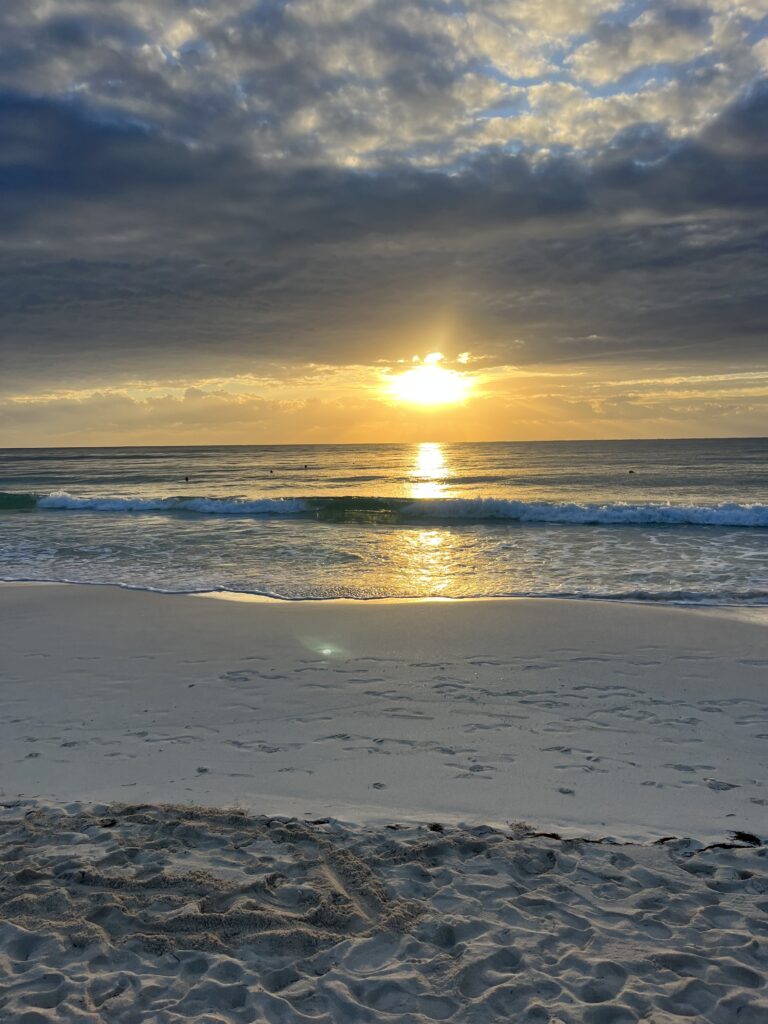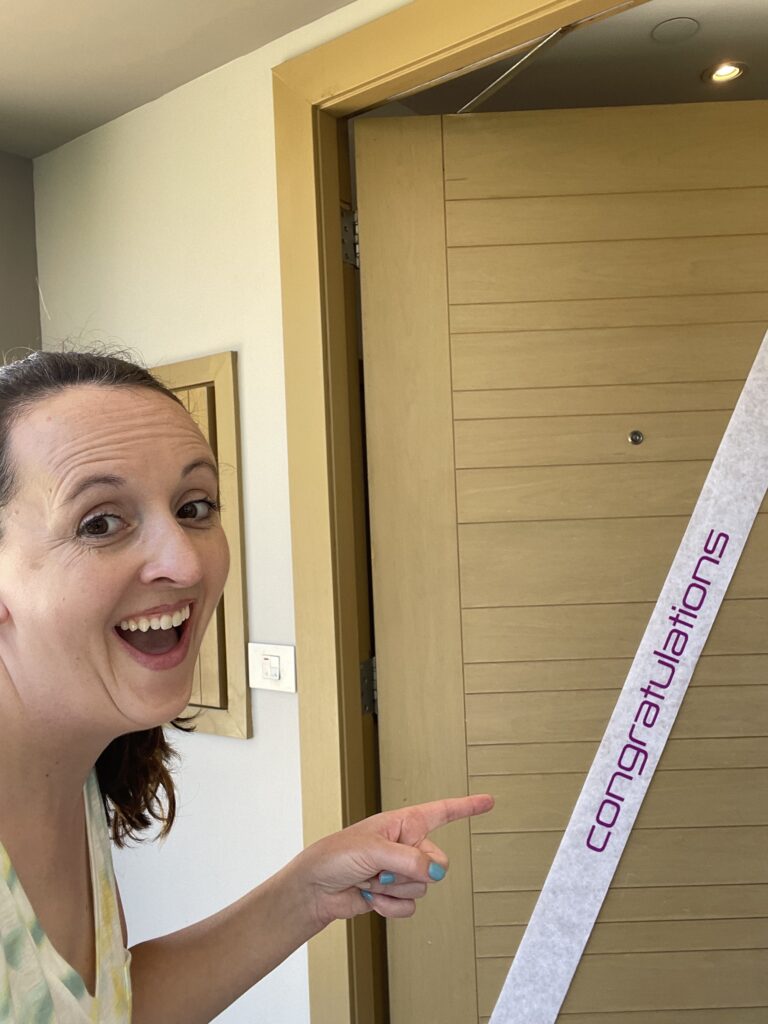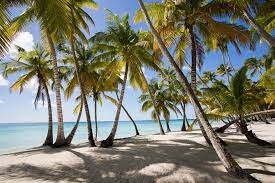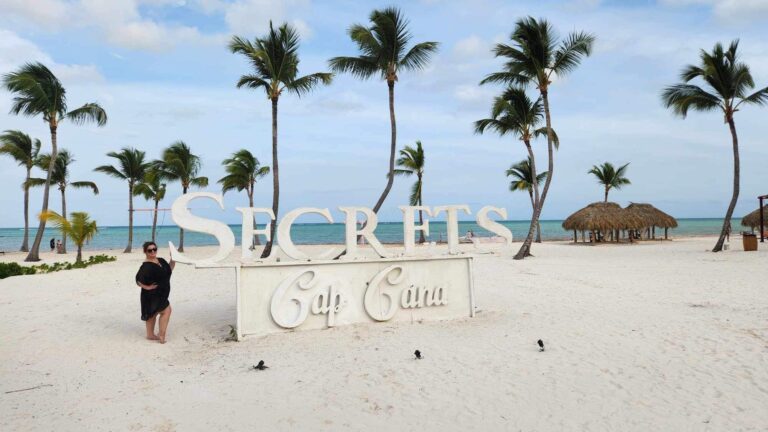Located about 100 mi/160 km east of Santo Domingo, Punta Cana and its neighbor, Bavaro, are ground zero in the ongoing all-inclusive resort explosion under way in the Dominican Republic (affectionately known as just "DR"). They're located along a beautiful 30-mi/48-km stretch of white-sand beach lined with coconut palms that was once nicknamed the Costa del Coco for marketing purposes; the Dominican Tourist Board, however, no longer favors the moniker. This lovely strip of shore looks like it was taken straight off a travel poster and has perhaps the finest (and certainly the longest and whitest) beaches and most beautiful turquoise and jade seas in the country.
Most hotels concentrate in Bavaro, although the entire coast has become known as Punta Cana, which is technically a separate and somewhat more exclusive area about 10 mi/16 km south of Bavaro. In the communities just inland from Bavaro, unregulated development has stolen much of the charm away from the sands and seas.
The largest complex is the Barcelo Bavaro, with more than 1,800 rooms between its two hotels, its own casino, two discos, a theater, a dozen dining options and an 18-hole golf course. The Bavaro hotels are closer together than those in Punta Cana, allowing for more movement between properties. Hotel development continues to make public beach access more difficult year by year, although several narrow access lanes lie hidden between the resorts.
Although more development is moving into the area, the resorts of Punta Cana have so far retained the relaxed atmosphere most visitors expect from a Caribbean vacation spot. Much of the ongoing development is centered on Cap Cana, south of Punta Cana proper; and at Macao and neighboring Uvero Alto, about a 40-minute drive north of Bavaro.
Must See or Do
Sights—The Hoyo Azul cenote at Scape Park in Cap Cana; crystal clear shallow waters of the piscina natural (natural pool) on Isla Saona; the Indigenous Eyes Ecological Park.
Museums—Taino artifacts at the Altos de Chavon Regional Museum of Archaeology in Casa de Campo; all things chocolate at the ChocoMuseo.
Memorable Meals—Fresh fish fried Dominican-style at La Yola Restaurant and Jellyfish Restaurant.
Late Night—Enjoying drinks and dancing at Mangu and Coco Bongo.
Walks—Meandering through jungle flora and fauna at the Punta Cana Ecological Foundation.
Especially for Kids—Shows with costumed Spanish conquistadors, parrots and dolphins at Manati Park; swimming with dolphins a la Jacques Cousteau at the Dolphin Explorer.
Geography
Located in the province of La Altagracia on the eastern-most tip of the country, the Punta Cana area's most distinct feature is the sandy white beachfront known as the Coconut Coast that runs from Punta Cana through Bavaro and up to Playa Macao in Uvero Alto. The warm Caribbean Sea harbors one of the longest coral reefs (19 mi/31 km) in the world, and the area also enjoys year-round sun and a warm climate.
Tourists enjoy the cave rappelling outside La Romana and day trips to the various islands such as Isla Saona and Isla Catalina.
History
A secluded stretch of jungle inhabited only by a handful of fishermen, this coastline on the Dominican Republic's east coast was virtually forgotten until American businessman and lawyer Theodore Kheel stumbled upon the 30-mi-/48-km-long area when a photographer presented him with aerial photographs of the area at a convention in Miami in 1969.
Kheel decided to build a resort complex like no other. At the time, the chunk of beachfront was inaccessible. There were no roads and no airport, so the resort dream proved difficult, but the entrepreneur-investor trail blazed ahead with other partners, including Dominican local Frank Rainieri, creating what is now known as the Puntacana Resort & Club, which opened in 1971. This resort spearheaded the future development for the region.
Potpourri
Mamajuana is a potent national libation infused with rum, red wine, honey and herbs. It is believed to be the Viagra of Dominican men.
When people talk about "eating the flag," they are referring to bandera Dominicana, the country's favorite meal of red beans, fried plantain, shredded spicy marinated beef and white rice, which encompass the colors of the Dominican Republic's flag.
After rum, the country's next biggest export to the U.S. is star baseball players, including David Ortiz, Pedro Martinez and Sammy Sosa. All-star New York Yankee A-Rod (Alexander Rodriguez) moved to the DR when he was 4.
Amber is the country's primary gemstone with larimar a close second.




































